Announcer:
The following program is a PBS Wisconsin original production.
Frederica Freyberg:
State lawmakers this week support dropping taxes on business equipment, even as a budget plan to cut income and local property taxes goes to a vote next week. And immigrant workers seek citizenship on a march from Milwaukee to Madison. I’m Frederica Freyberg. Tonight on “Here & Now,” Zac Schultz reports on how property taxes guide the political debate at all levels of government. Two experts discuss why critical race theory is so controversial yet important to understand. Murv Seymour talks with a religious leader advocating against voter suppression. And we’ll follow the immigrant marchers on their trek across the state. It’s “Here & Now” for June 25.
Announcer:
Funding is provided by Focus Fund for Journalism and Friends of PBS Wisconsin.
Frederica Freyberg:
The complicated GOP state budget machinations over tax cuts leave school districts about even, but allow for federal COVID relief dollars to flow into Wisconsin. Budget writers essentially bought down property taxes, giving cuts to homeowners. They then backfilled school funding with state dollars. That maintained eligibility for federal funds which would have been forfeited had Wisconsin not obliged to the “maintenance of effort” threshold for state funding of schools. Wisconsin’s property tax is a vexing and important driver for homeowners, schools and politicians. Senior political reporter Zac Schultz unravels the way it works.
Zac Schultz:
If you live in Wisconsin, there’s almost no escaping the property tax. Even if you don’t own a home, you’re paying your landlord’s property tax bill through your rent and that bill can be big.
Jason Stein:
In Wisconsin that’s the biggest single tax.
Zac Schultz:
Jason Stein is research director at the Wisconsin Policy Forum and studies state and local government. He says Wisconsin stands out in how much we rely on the property tax.
Jason Stein:
We rely very heavily on the property tax to fund local government.
Zac Schultz:
Counties, towns, villages, cities, school districts and technical colleges all collect property taxes to help fund basic services like education, police and fire protection, parks, roads and the courts. When you open your bill, you can see where your money is going and how it all adds up. How much you pay is based on the value of your property. Let’s look at two homeowners in the city of Onalaska located north of La Crosse on the Mississippi River. The owner of this $800,000 home in the bluffs owed nearly $14,000 in 2020. Down the hill, the owner of this $170,000 home paid $2700.
Jason Stein:
So if you ask any homeowner in Wisconsin, “Hey, what’d you pay in property taxes last year?” They’re going to be able to give you a number that is close or even exact to what they paid.
Zac Schultz:
One reason the property tax stands out is it comes in one large bill. You pay sales tax on each transaction. You pay your income taxes on each paycheck. The property tax stands alone.
Jason Stein:
You combine both the salience and the actual size of it and it tends to loom pretty large in people’s minds.
Zac Schultz:
In theory, property tax levies are set at the local level by school boards and city councils when they past their budget. But in reality, property taxes are controlled at the state level by politicians and the Legislature.
Tony Kurtz:
The goal obviously is to keep property taxes low.
Zac Schultz:
Representative Tony Kurtz is a Republican on the Joint Finance Committee which writes the state budget every two years.
Tony Kurtz:
I think everybody, especially my area, when you get that property tax bill, everybody kinda holds their breath.
Zac Schultz:
He says Republicans fixate on property taxes because that’s what their voters tell them to do.
Tony Kurtz:
I kept hearing don’t raise my property taxes. So in my area, that’s a sensitive issue.
Zac Schultz:
The state has traditionally controlled property taxes in two ways: by using the state budget to help pay for services provided through general aid to schools and shared revenue for local governments and by using state law to eliminate local control and enforce revenue limits, preventing property taxes from increasing. Public schools have been under revenue limits since the 1990s when the state promised to pay two-thirds of the schools’ cost in exchange for a cap on property taxes. While the state rarely lives up to its end of the bargain in providing two-thirds funding, it does set how much the caps can rise.
Kent Ellickson:
Think of that as a bucket or container.
Zac Schultz:
Kent Ellickson is the director of finance for the school district of Onalaska. He compares their budget to a bucket and the revenue limits cap the size of the bucket.
Kent Ellickson:
So the state sets the size of that bucket, number one. And number two, they determine how much they’re going to fill up that bucket.
Zac Schultz:
Ellickson says after the state fills part of the bucket, the schools levy property taxes to fill the rest. If the bucket isn’t big enough, they ask their taxpayers to pass an operating referendum to increase the revenue limit.
Kent Ellickson:
We’ve been decades in funding with continuous operational referenda. That supports about seven or eight percent, a significant chunk of our operational budgets.
Zac Schultz:
Cities, villages, towns and counties have been under revenue limits since the 2000s. Originally, their tax levies were able to increase with inflation. But that was zeroed out under former Governor Scott Walker. Now the tax levy can only increase by the value in new construction, which is a very small number in most municipalities.
Steve O’Malley:
This past year was 1.5% and that doesn’t recognize inflation.
Zac Schultz:
Steve O’Malley is the La Crosse County administrator.
Steve O’Malley:
For most of the last two decades, we’ve seen little growth in any form of state or federal revenue. And we have the most restrictive levy limits in the nation.
Zac Schultz:
O’Malley says state and federal mandates require them to maintain highways, the jails, the courts and provide human services all without additional revenue.
Steve O’Malley:
You end up having to cut budgets. You have to cut positions. We’ve steadily decreased the number of full-time employees within La Crosse County, as have most counties across the state.
Zac Schultz:
O’Malley says the state should increase shared revenue because he doesn’t want to increase property taxes.
Steve O’Malley:
It’s just the hypocrisy of mandating us to provide services and not funding it. You have legislators who get to take credit for controlling property taxes but they don’t have to pay for what they mandate counties to provide.
Roger Stanford:
Right now, those limits are going to really strangle us.
Zac Schultz:
The technical colleges make up another line on your tax bill. Roger Stanford is president at Western Technical College, which covers an 11-county area centered in La Crosse. They too had limited authority to raise property taxes wiped out by Governor Walker.
Roger Stanford:
We were accountable under a system and it was a system that worked and it was a representative system because it represented our counties.
Zac Schultz:
Stanford says the levy limits hurt their ability to offer new job training programs that are requested by local employers because they don’t have the money to create new classes. He says people focused on their tax bill need to understand a small increase can lead to more jobs.
Roger Stanford:
So anytime you save them $6, $8, $7 on that tax bill that feels good. When you add $6, $7, $8 on there, you go, what am I directly getting for that. It’s hard for someone to look at that and say, “Oh, there’s a better workforce. Oh, they added another section of welding.” It doesn’t transfer to our citizenship exactly that way.
Mary Felzkowski:
We hear about that constantly and holding the line on property taxes.
Zac Schultz:
Senator Mary Felzkowski is also a Republican on the Joint Finance Committee. She agrees most voters do not always understand the link between property taxes and the services they pay for.
Mary Felzkowski:
So do they always realize everything that’s funded off of it? Probably not. But it’s still the difference of can I afford to stay in my house or not.
Zac Schultz:
Republicans could increase the amount of money the state gives local governments and schools to reduce their reliance on property taxes. But over the last decade, they’ve chosen a different route, pouring more state money into property tax credits. These credits appear on your property tax bill as a negative number, reducing the amount you owe. The state uses money collected from sales and income taxes to pay off a portion of your property taxes. The first dollar credit adds up to $150 million a year statewide and it’s the same number for all homeowners in each school district. The lottery credit comes from proceeds from the lottery and it’s the same for all homeowners as well. The school levy credit is the big one and it’s used to lower the tax rate in each school district and this is where Republicans have invested more and more money, to the point where the state budget spends nearly a billion dollars a year on the school levy credit.
Scott Walker:
Both property and income taxes will be lower in 2018 than they were in 2010.
Zac Schultz:
This accelerated during Scott Walker’s time as governor. He started campaigning on a pledge to make property taxes lower than when he took office. And when freezing levy limits wasn’t enough, he started pumping more state money into credits. Republicans increased the size of the school levy credit in 2013, ’16 and ’18. In 2014, they added $420 million in state dollars to the technical college budget but required them to lower property taxes by the same amount. In 2017, they eliminated the state forestry tax and backfilled the programs with state money. They also put state money into funding the lottery so that credit would increase. In the last decade, the state has invested $13.6 billion to buy down property taxes. But who’s seen the most benefit from that $13 billion investment? Who’s saving the most money? The people who own the most property, of course. Let’s look at our homeowners in Onalaska. In 2011 when Governor Walker came into office, this home was valued at $706,000 and the owner paid $14,000 in property taxes. Over the next ten years, the home went up $95,000 in assessed value, to $801,000. But in 2020 the property taxes had gone down from where they were in 2011, to $13,992. Over the years, those three tax credits on the bill saved the owner $14,000. Down the hill, this home was valued at $108,000 in 2011 and paid $2,000. Over the decade, this home went up $60,000 in value, but by 2020 the property taxes were up to $2780. The three credits saved this homeowner just under $4,000. Republicans like Senator Felzkowski says it’s okay if the wealthy save more.
Mary Felzkowski:
Well I also think you need to look at who’s paying more property taxes? Is it fair that this guy over here, if he’s going to pay more, if we implement a savings, he’s going to save more.
Zac Schultz:
Republicans say controlling property taxes was all about helping people afford to stay in their homes.
Tony Kurtz:
When we can keep property taxes low that’s going to keep those people on those fixed incomes.
Zac Schultz:
But increasing the school levy credit is not the best way to achieve that goal.
Jason Stein:
If you want to ensure that say elderly people remain in their homes, then no. There would be more efficient ways to do that.
Andrew Reschovsky:
We have it sort of upside down in Wisconsin.
Zac Schultz:
Andrew Reschovsky is a professor emeritus at the University of Wisconsin. He studies public affairs and one of his studies found only about half of the school levy credit goes to Wisconsin homeowners. The rest of the credits go to the owners of farmland, commercial property, industrial property and out-of-state owners. Most of the credit goes to wealthy property areas.
Andrew Reschovsky:
The way the levy credit works, they get a larger proportion of the total credit.
Zac Schultz:
Professor Reschovsky says if the goal is to help low-income homeowners pay their property taxes, the solution is not through the property tax bill, but through the income tax return.
Andrew Reschovsky:
The homestead credit is what economists call a circuit breaker.
Zac Schultz:
The homestead credit kicks in if the proportion of your property taxes is high compared to your income. But compared to other property tax credits, it’s very limited.
Andrew Reschovsky:
Over the last ten years, the number of people getting the credit has halved.
Zac Schultz:
In fact, the homestead credit is the one area of property tax relief Republicans have cut over the last decade, down 45% from where it was in 2011.
Andrew Reschovsky:
It’s tiny. Tiny amount of money relative example to the school levy credit.
Zac Schultz:
In the same decade Wisconsin spent $13 billion to lower property taxes. The state spent just $1 billion on the homestead credit.
Andrew Reschovsky:
The irony is that by that focus, we are not achieving the political goal that the legislators wanted in the beginning, which was to target those people who really need relief.
Zac Schultz:
Reporting from Onalaska, I’m Zac Schultz for “Here & Now.”
Frederica Freyberg:
You heard Zac report on levy limits placed on schools and local governments. Republican budget writers kept those spending caps in place in the budget to be voted on next week.
Meanwhile, earlier this month a group of state Republican lawmakers introduced legislation that would prohibit public schools, the UW and tech colleges from teaching critical race theory, a decades-old academic theory that holds that racism is systematic, built into societal institutions since the days of slavery. Gloria Ladson-Billings is one of the academics who first applied the critical race theory to her education policy research. She’s an emerita professor at UW-Madison and now the president of the National Academy of Education. But how does critical race theory cross over into today’s politics? To that, we ask Emeritus Professor John Witte. He’s a UW-Madison education policy expert who says the concept is widely misunderstood. And they both join us now and thanks for being here.
John Witte:
You’re welcome.
Gloria Ladson-Billings:
A pleasure.
Frederica Freyberg:
Well, first to you, Professor Ladson-Billings, in layman’s terms, what is critical race theory?
Gloria Ladson-Billings:
It is an attempt to begin to understand racial disparity. If you look over the history of the nation, we started out in 1600 up into the mid-20th century literally saying that the reason that there were racial disparities is because there were biological and intellectual deficiencies. We’ve finally put that myth to rest and eugenics has fallen out of favor. I would say in the next few years we began to look at issues of equal opportunity. So we had the Brown decision. Certainly we had Reconstruction, we had the Brown decision, the civil rights movement, the Voting Rights Act. So we’ve had opportunities but they all get rolled back. We can show you clearly in the history of the nation that we roll those back. So critical race theory is yet another way to think about how do we understand racial disparity.
Frederica Freyberg:
So Wisconsin U.S. Representative Glenn Grothman has introduced a bill banning its teaching saying the purpose of this retelling of American history is to try to set American against American, he says, and that, “the CRT curriculum that enlightened educators are regurgitating teaches our children hate – to hate each other and hate their country. There are no boogeymen holding people back because of where they or their ancestors are from.” Professor Ladson-Billings, what is your response to that?
Gloria Ladson-Billings:
The boogeyman is that CRT is in K-12 schools. It’s there as much as unicorns are there. It is not taught in the curriculum and I would probably advise Representative Grothman to go up Bascom Hill and look at the plaque about sifting and winnowing which sites an 1894 report that says this is a state that will not prohibit the search for the truth. They didn’t want Professor Ely in the 1800s to teach socialism. I’m very heartened by the fact that we had the Joint Chiefs of Staff General Mark Milley said the other day that he had read Mao Tse Tung. He’d read Lenin. He’s read Marx. It didn’t make him a communist.
Frederica Freyberg:
Does critical race theory teach to hate white people?
Gloria Ladson-Billings:
Absolutely not. In several of the interviews that I have done before I’ve done interviews with print reporters, I’ve sent them articles I’ve written and then when they contact me, I said, what in the article says that you should hate white people. They all agree, it’s not there. It is not there.
Frederica Freyberg:
Professor Witte, we know that President Trump banned any federal training in critical race theory, white privilege or other what he called propaganda. A ban that is now rescinded but was that directive the genesis of politicizing critical race theory?
John Witte:
Oh, yes, it was. That and of course January 6th. It goes back to the whole problem, starts with January 6 and then Trump gets involved. But there are misunderstandings about — very different misunderstandings about what it means, I think. While Gloria I think has laid it out accurately, different people just simply interpret it differently. So the people that are proponents of it, again they point to the historic origins of it, slavery, and they also argue that it’s still a present problem now with inequities. The difference is that the opponents say that there’s a blame game here, that the current generation is somehow to blame for what happened historically and it’s their responsibility to rectify it. That’s where you get the huge divide and you get the very strident differences between those positions.
Frederica Freyberg:
So what should we make of the way that proposals to ban critical race theory as a school subject are sweeping the nation?
John Witte:
Well, my view has been that because of the differences in opinion what it means, you should be very ginger about teaching it. I would not introduce it to elementary students or even middle schools. I do think it should be introduced in high schools because it’s part of current events. It’s all over the newspapers. It’s all over the news. It’s going to be all over this show tonight. And I hope that there are some high school kids out there watching and reading those things. I think there you can discuss it in a reasonable manner. But again, you got to approach it in a gingerly manner because you can get very bad feelings on both sides, both for African-Americans and for white people.
Frederica Freyberg:
Professor Lawson-Billings, is it part of school curriculum now at the K-12 level?
Gloria Ladson-Billings:
It is not. It is not. I would not even introduce it in high school. It’s a theory. Who needs theory? Graduate students. Having spent 27 years on the faculty of the University of Wisconsin, I never introduced it even to undergraduates. I worked with graduate students who are looking for a theoretical frame to bolster an argument and that’s where it resides.
Frederica Freyberg:
Professor Witte, you have said you think actually a different term altogether should be used to discuss racial disparities. Why?
John Witte:
I would drop critical race theory and find other terms – whatever the faculty member prefers to deal with it – racial differences, inequities in race — however they want to phrase it. I don’t think — I disagree with Gloria here. I don’t think you should avoid it. Now, that’s partly what I do. I bring — for my whole career I’ve brought in controversial — the most controversial things I could find. We talked about abortion for example at the undergraduate level, very heated issues. I talked — I studied vouchers, educational vouchers, very heated issue in the education world. I talked about it straightforward and both sides given. I think the same thing should happen here. I think again you have to be very sensitive to doing it. I agree with her there. I agree with that because you got to always watch the faces of people to see who’s being harmed and who’s getting very angry. You can tell that when you have a discussion in the classroom. You can see it and watch for that.
Frederica Freyberg:
I want to ask one last question quickly of you, Professor Ladson-Billings. Apart from the brouhaha over critical race theory, what is the importance of teaching culturally accurate history?
Gloria Ladson-Billings:
I’ve been very fortunate as the current president of the National Academy of Education that we have just put out a report on civic discourse and civic reasoning. That’s the place where I think we have to go as a nation. As John mentioned, January 6 showed us clearly we don’t know how to sit down and talk when we disagree. So that’s the work that we have to do, is figure out how do we have civil discourse, even when we don’t see the world the same way.
Frederica Freyberg:
We need to leave it there. Professors, thank you very much for your insights.
Gloria Ladson-Billings:
Thank you.
John Witte:
Thank you.
Frederica Freyberg:
This week, the state Assembly passed a slate of election-related bills that will head to the governor’s desk and are likely to be vetoed. The GOP-introduced bills would require indefinitely-confined voters submit photo IDs to vote and would make most absentee voters reapply each election to receive a ballot. The package drew criticism from Democrats who say it makes it harder to vote.
Mark Spreitzer:
Since November 2020, Republicans have been perpetuating conspiracy theories that the 2020 presidential election was stolen, leading to armed insurrectionists storming the nation’s Capitol. Now they want to use the doubts that they themselves created as the basis for changing state election law.
Robin Vos:
The goal is to make sure at the end of the day that every single person has the chance to vote, but that we guarantee the confidence in the election, which has been severely undermined by the actions of a few over the course of the last election cycle hopefully are a thing of the past.
Frederica Freyberg:
Changing the rules on how people vote has become a top priority for Republicans in Wisconsin and across the country. They say their objective is to ensure the integrity of the vote. Opponents call it voter suppression. Opponents like Madison-based Rabbi Bonnie Margulis who spoke with Murv Seymour in this week’s “Noon Wednesday” livestream asking whether the status of the bills matters.
Murv Seymour:
Governor Evers is going to more than likely veto these bills, but what’s the impact of the bills actually being introduced and put out there? What kind of pressure is that putting on the voting process?
Bonnie Margulis:
People don’t always read to the end of a news item to read that the governor vetoed these bills. They just hear that they’re out there and it makes for a lot of confusion and a lot of people not really knowing can I do this, can’t I do this, what’s the law now? And the more people are confused, the more reluctant they are to even try to vote. So it really has a very negative effect on voter registration and voter turnout, which sadly, is the purpose of these bills and of the false narrative that’s being promoted.
Frederica Freyberg:
Now to immigration news and one group’s effort to create change. Sunday immigrant essential workers and their allies began a march from Milwaukee to Madison demanding citizenship and driver’s licenses for all.
Christine Neumann-Ortiz:
Biden ran on a promise of citizenship in his first year. Democrats can get it done by including it in this jobs packet. This march is to invite people to elevate those voices and to send a message to Biden and Congress that they are not alone.
Frederica Freyberg:
This march is part of a broader national movement fighting to include citizenship for all in the infrastructure bill currently being negotiated. Marchers said this would not only help individuals, it would also benefit the economy.
Maria Del Pilar Wadina:
Our business partners are hurting for factory workers, drivers, food service and many other jobs. Businesses are having to close because of the current workforce shortage crisis we are experiencing.
Frederica Freyberg:
This march will end Monday, June 28, concluding with a demonstration at the state Capitol. There, participants will tell the community when they expect immigration reform.
Marchers:
The time is now! The time is now! The time is now!
Frederica Freyberg:
For online coverage of the march and more on all the topics we covered in tonight’s program, go to PBSwisconsin.org and click on the news page. That is all for tonight’s program. I’m Frederica Freyberg. Have a great weekend.
Announcer:
Funding for “Here & Now” is provided by the Focus Fund for Journalism and Friends of PBS Wisconsin.
Search Episodes
Related Stories from PBS Wisconsin's Blog

Donate to sign up. Activate and sign in to Passport. It's that easy to help PBS Wisconsin serve your community through media that educates, inspires, and entertains.
Make your membership gift today
Only for new users: Activate Passport using your code or email address
Already a member?
Look up my account
Need some help? Go to FAQ or visit PBS Passport Help
Need help accessing PBS Wisconsin anywhere?

Online Access | Platform & Device Access | Cable or Satellite Access | Over-The-Air Access
Visit Access Guide
Need help accessing PBS Wisconsin anywhere?

Visit Our
Live TV Access Guide
Online AccessPlatform & Device Access
Cable or Satellite Access
Over-The-Air Access
Visit Access Guide
 Passport
Passport








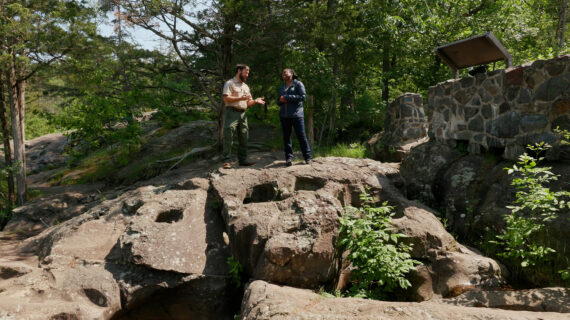



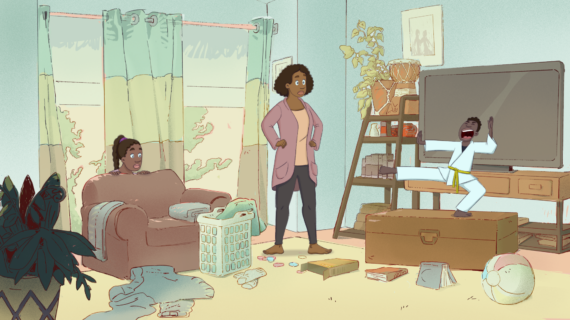
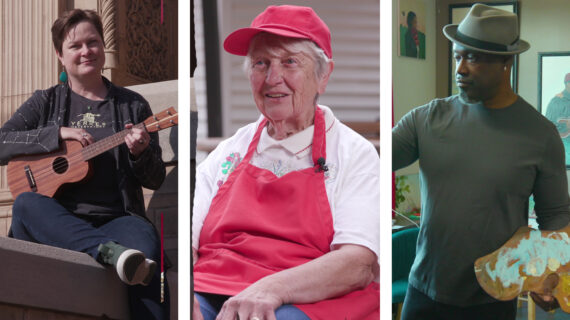
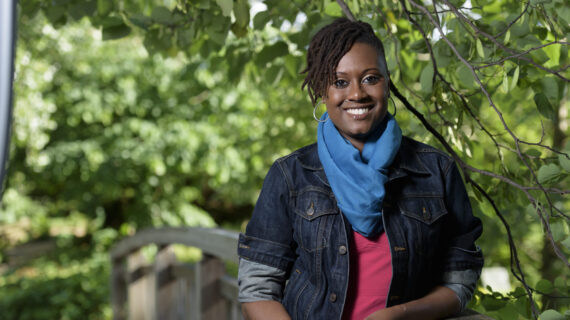
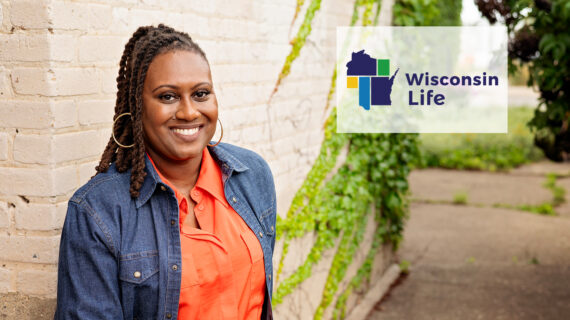


Follow Us